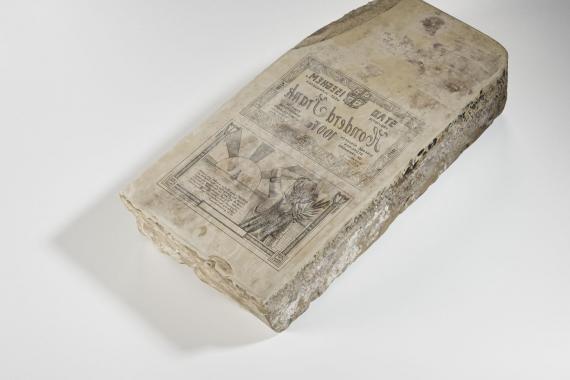Lithography is based on the principle whereby grease and water repel one another. A mirror design is first of all made on limestone. The design is then fixed using acacia gum, to which an acid was often added. The blank part of the stone is then digested with acid. This phenomenon creates a difference in height between the design and the rest of the stone. During printing, only the design – which is in relief to the rest – is transferred onto paper.
It is not just in the Museum that you can browse through the collection of emergency currencies; they can also be consulted online. To find banknotes from a particular municipality, first click on the map of Belgium, on the province to which the municipality belongs today. Once you have selected the province, click on the municipality of your choice (the name of the municipality is that used since the latest merger of communes). For each municipality, all types of banknotes then appear in a small scale. A simple click on any picture you choose will bring up a more detailed image of the front and back of the note, accompanied by a brief description.
